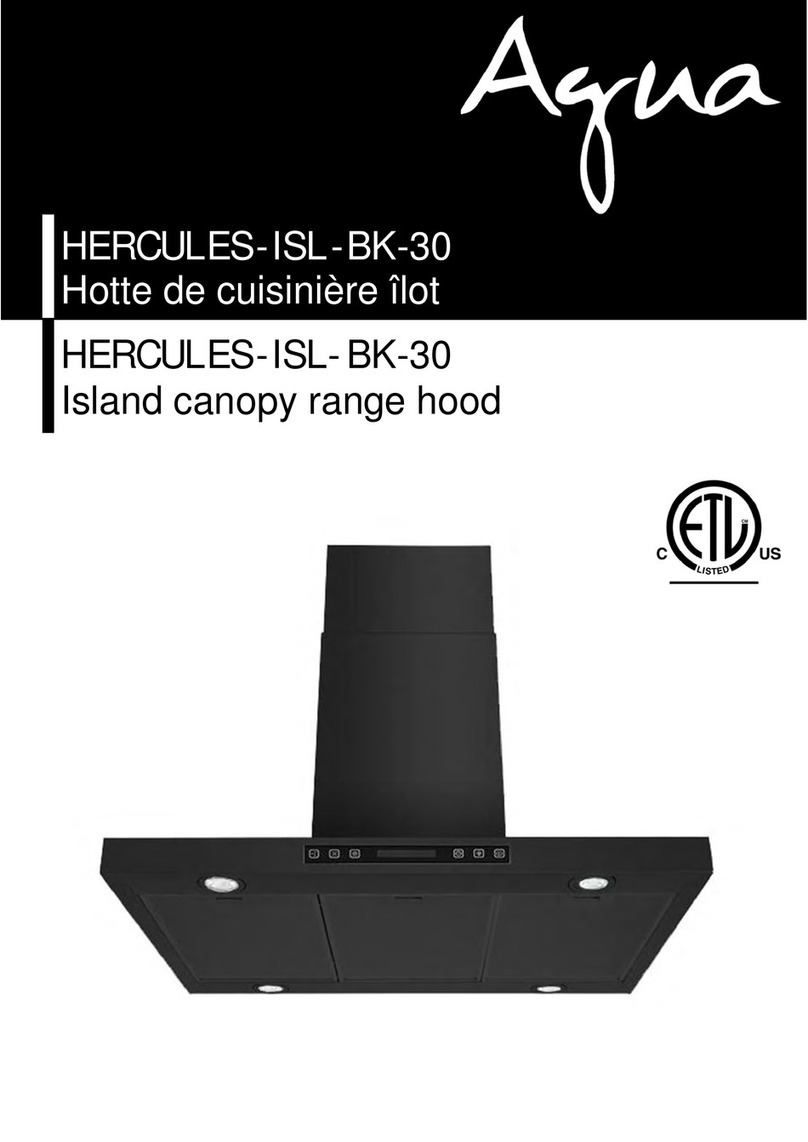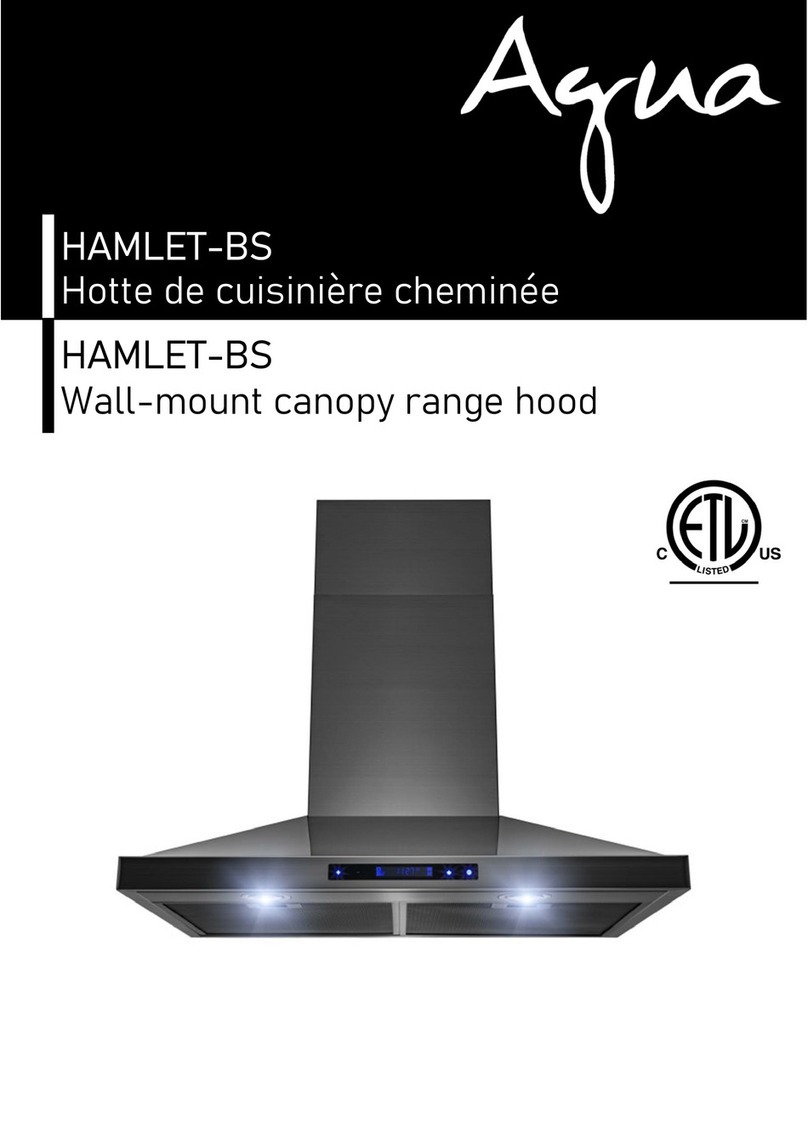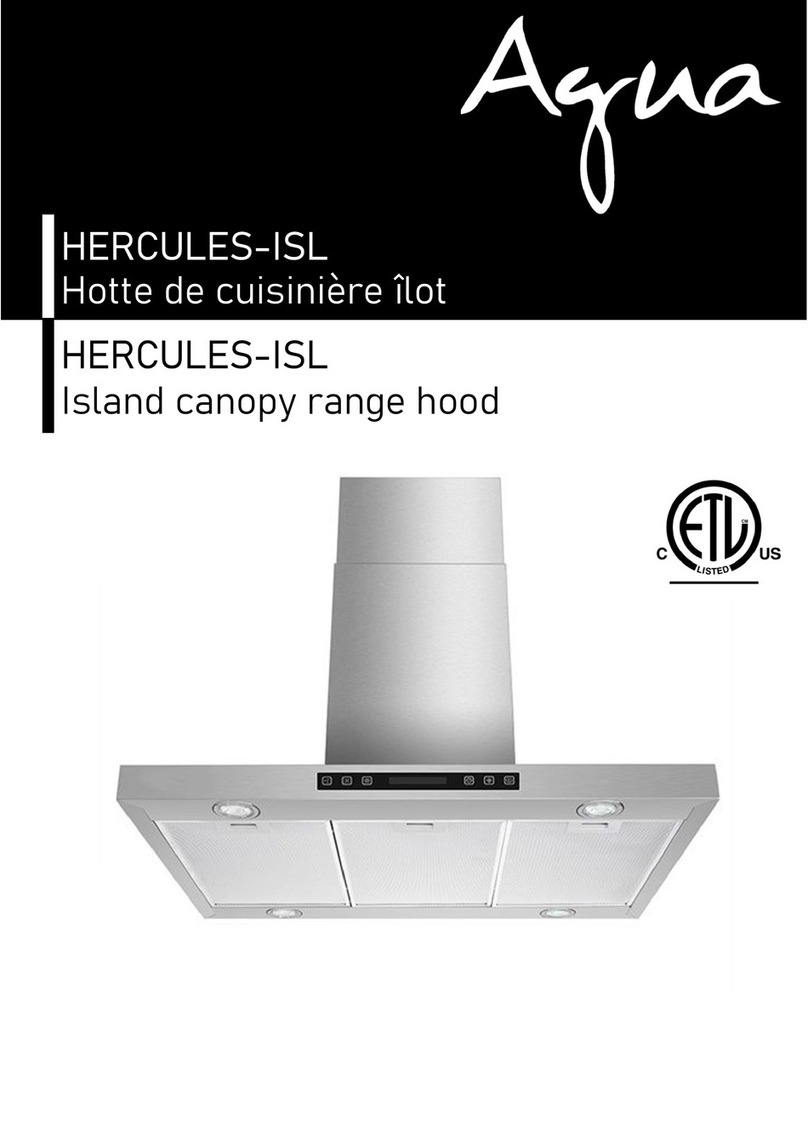PREPARATION FOR INSTALLATION
SAFETY INSTRUCTIONS
To reduce the risk of fire, electric shock, or injury to persons, observe the following:
1. This range hood is for general ventilating use only. Do not use it to exhaust hazardous or
explosive materials or vapours.
2. This appliance must be installed by a qualified technician. The seller declines all
responsibility in case of failure to adhere to safety standards. Ensure that exhausted air
from this unit is not directed into flue that is used for venting fumes from other appliances.
3. Use this unit only in the manner intended by the manufacturer.
4. Before servicing or cleaning the unit, switch electric power off at central service panel and
lock service panel door so as to prevent power from being switched on accidentally.
When the power disconnecting means cannot be locked, securely fasten a prominent
warning device to the power service panel.
5. Installation work and electrical wiring must be done by qualified persons in accordance
with all applicable codes and standards, including fire-rated construction.
6. To prevent back drafting, sufficient air is needed for proper combustion and exhausting of
gases through the flue. Follow heating equipment guidelines and safety standards as
published by the local code authorities.
7. When cutting or drilling into any wall or ceiling, take precautions so as to not damage
electrical wiring.
8. Ducted ventilation must always be vented outside. Do not vent exhaust air into spaces
within walls, ceilings, attics, crawl spaces or garages.
9. Use only metal ductwork.
Install this hood in accordance with all requirements specified.
WARNING
This appliance requires a 120V 60 Hz electrical supply, and must be connected to an individual
properly grounded branch circuit, protected by a 15 or 20-ampere circuit breaker or time delay
fuse.
Two people are required for installation
Do not cut a joist or stud unless absolutely necessary. If a joist or stud must be cut then a
supporting frame must be constructed.
Before making cut-outs make sure there is proper clearance within the ceiling or wall for the
exhaust vent.
Check your ceiling height and the hood height maximum before you beginning installation of your
hood to ensure proper mounting height and clearance.






























